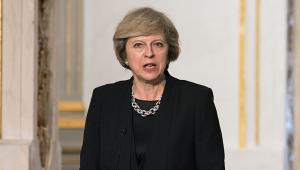Key takeaways
- Preventative interventions are investments for the future, yielding benefits such as avoidance of future costs, reduced demand for services and improved financial sustainability
- Short-termism and a focus on silos can deter investment in preventative approaches
- Improving evaluation of preventative investment can support better decision making, improve transparency and accountability for use of public money and allow a picture of overall preventative investment to be constructed
- Tools and guidance are available in order to establish an effective framework for evaluating investment in prevention
Prevention as an investment
An investment can be defined as ‘the act of putting money or effort into something not consumed today to make profit or achieve a result in the future’. Therefore, spending on prevention is a true investment, as such upstream interventions can avoid future costs, reduce demand on services, and achieve greater benefit from existing resource.
Public spending must take account of the outcomes it delivers, but also its potential impact on financial sustainability – that is, the ability to meet service delivery and financial commitments both now and in the future. All the future costs and benefits of public spending decisions must be carefully considered. For preventative investment, what is of equal importance is considering the consequences of not making the investment.
Prevention is often viewed as merely a way of generating savings, and often these savings may be realised by an organisation other than the one making the investment, or involve long timeframes. Therefore, it is suspected (but difficult to evidence) that spending decisions are taken with an emphasis on the short term and an organisational focus, rather than considering the broader picture, and therefore there may be substantial disinvestment in prevention.
Improving evaluation of prevention
Evaluating preventative investments on a robust and consistent basis would enable more systematic prioritisation of resources and make any short-termism in decision making more transparent by:
- providing clear information to support better decision making on use of resources
- bringing longer term costs and benefits, which often lack visibility, to light
- increasing transparency and accountability for how resources are invested
- improving incentives to invest in prevention, relative to more reactive interventions.
Consistent evaluation could also enable a picture of overall levels of preventative investment to be constructed and ultimately provide better information upon which decisions can be based.
There are several distinguishing features of preventative approaches, which make assessment and evaluation problematic. In considering a framework to improve the evaluation of preventative investment, there are a number of key requirements to be met:
- a balanced view of the financial and economic costs and benefits
- a whole-system, place-based approach – unrestricted by organisational focus
- consideration of the financial sustainability of the investment, and its impacts
- allowing for the assessment of the degree to which appropriate preventative investment is in place.
A framework for evaluation
CIPFA and Public Health England set out to improve the evaluation of preventative investments in public health through the development of a common, transparent approach to evaluate costs and benefits. While the focus of this work is on public health, the principles and framework are applicable more widely to public sector preventative investment.
They identified existing tools and resources which could be utilised across different types of intervention, across different organisations and at local, regional or national levels to evaluate preventative investment.
- Cost-benefit analysis (CBA) methodology can provide a balanced evaluation of financial and economic costs in a manner universally understood across public services.
- Variations of this methodology are well-suited to judging the comparative merits of investments on a whole-system basis, thus allowing a cross-organisational view to be taken.
- Use of International Public Sector Accounting Standards Board (IPSASB) guidance and the principles of the Prudential Code allows for consideration of the impact of investments on long-term financial sustainability, and would enable comparative assessment of investment across time and place.
Adopting these methods would enable preventative investment to be measured in a methodical and consistent manner, backed by a shared understanding of what constitutes good practice. This would not only aid in making the case for investment, but increase transparency and allow for comparison and analysis of such interventions over time and place.
Local circumstances and priorities will of course vary, but organisations should use the appropriate methodology to review and explain the level of investment in specific interventions and assess the value gained in their local systems.
It would also enable such information to begin to be communicated and reported in a way that makes it more meaningful or relevant to local citizens.
Questions for you
- Are you aware of the overall extent of preventative investment undertaken by your organisation?
- Do you have a consistent approach to evaluating preventative interventions across services/departments/organisations?
- If so, does it take account of all the factors discussed above?
- Could the proposed framework for evaluation of preventative investment be applicable to your area?
Further information
Evaluating Preventative Investment in Public Health (CIPFA and Public Health England, May 2019) is available to download from the CIPFA website.













